Part I – Hardcore ODD Skills
Preparation
- Risk profiling
- Size of the manager (boutique vs institute)
- Geography (both for the manager and for the investments)
- Firm & Investment Strategy (including differences between liquid and illiquid investments and fund and corporate exposures)
- Instruments used
- Information gathering & (O)DDQ
- Desktop analysis
- Determining focus / points of attention for the onsite & set the agenda
Onsite
- Governance & Firm Ownership
- Corporate governance framework
- Governance framework for the Fund/investment
- Ownership Structure of the management company – proper balance of powers
- Organizational Overview & Structure
- Overview of key roles, responsibilities and activities within a firm – focus on the ODD point of view
- How to ensure decent segregation of duties
- How to ensure proper countervailing power
- HR/Staffing
- Key person risk and mitigants
- Succession planning
- Key staff from an ODD point of view
- When is a manager ‘sufficiently staffed’?
- Recruitment
- On-boarding and training
- Performance appraisal process / retention
- Background checks on new/existing staff
- Employee surveys
- Culture
- Alignment of Interest
- Remuneration policies and procedures
- Bonuses, performance fees / carried interest and co-investments
- Dependence on one or few large investors in the AuM
- When is a manager / professional ‘sufficiently aligned’?
- Non-financial alignment
- Financial condition of the firm
- Client base
- Fee breakeven level
- Financial analysis (Solvency, NWC, profit margin and operating cash flow)
- Internal controls
- Key in-house controls
- In-house controls versus third-party controls
- Added value of third party control reports/statements such as SOC1, SSAE16 and ISAE3402
- Focus areas for ODD in a third party control report/statement and pattern recognition
- Risk Management (including countervailing power)
- Risk management organization (independent versus ‘embedded’)
- Risk management officer role and suitability
- Operational risk management
- Financial risk management
- Compliance (including regulatory, corporate and investment compliance)
- General
- Assessing quality of Chief Compliance Officer/General Counsel (qualifications, experience, countervailing power, etc)
- Suitability of the compliance organization and framework
- Regulatory compliance
- Regulatory regime and how to ensure a manager is well-positioned to comply with the relevant rules and regulations
- Reviewing documentation of regulatory examinations/investigations and what to look for
- Added value of (regulatory) compliance consultants
- Corporate compliance
- Compliance manual and related policies (and focus areas)
- Code of ethics
- Compliance training
- Compliance systems/tooling
- Investment compliance
- Main investment compliance topics for alternative investment managers
- LPA / side letter compliance
- General
- Background Screening
- Ways of conducting (independent) background screening
- Selection of a third party vendor to perform background screening
- Adverse press and reputational matters
- Relying on manager information on litigation, legal proceedings, etc.
- Red/yellow flags and pattern recognition
- Conflicts of Interest
- Outside business activities
- Gifts/entertainment
- Personal trading
- Family relationships
- Allocation of investment opportunities across multiple funds/accounts
- Capital structure conflicts (debt vs equity investments)
- Conflicts across investors / limited partners
- Fee structures
- Determining proper fee levels and independent verification of fee calculations
- Investment Life Cycle (focus on the investment process)
- Investment sourcing
- Dealing with brokers / intermediaries and in-house ‘consultants’
- Third party due diligence versus in-house due diligence
- Investment approval process and documentation
- Pre-signing checklists and involvement from non-investment staff
- Use of derivatives
- Monitoring of investments and information flows from the investments to the manager and ultimately to the investors
- Hold-sell analysis
- Divestment process
- Cash Controls
- Cash controls on investment/Fund/SPV level: initiation, approval and release of payments
- In-house cash controls versus third party (administrator) cash controls
- Cash controls on management company level
- Fund Accounting
- Key fund accounting processes
- Assessing quality of CFO and key fund accounting staff (qualifications, experience, countervailing power, etc)
- Suitability of key systems used (Investran, eFront, AltaReturn vs QuickBooks and/or Excel)
- In-house accounting versus third party administrators
- Custody / Depositary
- Scope and focus of a custodian / depositary
- Added value of a custodian / depositary from an investor point of view
- Valuations
- Valuation process and policy
- Valuation techniques
- Added value of third party appraisals
- Financial Audit
- Financial statements review – key focus areas
- Independence of the auditor
- Reporting to Investors
- Reporting process – checks & balances in place
- Bespoke reporting
- (not) Meeting reporting deadlines
- Third Party Service Providers
- Scope of assignment
- Focus
- Agreements – where to look for
- How to assess suitability/quality of a service provider?
- Selection and monitoring/oversight
- IT
- Key systems
- IT controls
- Business continuity / disaster recovery
- Crisis management
- Cyber Security
- Cyber Security governance: role and position of the CISO
- Cyber Security framework/policy
- Cyber Security awareness – how to test this?
- Cyber Security accreditations (such as Cyber Essentials and ISO27001)
Finalizing the ODD Opinion & Reporting
- How to form/finalize and report an ODD opinion
- Confirming ODD findings and double-checking (both internally and externally – which may include reference calls)
- Follow-up and Monitoring (must haves vs nice to haves)
Exam
Part II – Soft (ODD) Skills
- Onsite conversation techniques (different techniques and how/when to apply)
- Non-verbal communication (which may include pitch, speed, tone and volume of voice, gestures and facial expressions, body posture, stance, proximity to the listener, eye movements and contact, dress and appearance)
- How to discuss ‘challenging / sensitive topics’ (including dealing with emotions and/or ‘resistance’)
- How to “spy the lie”
- Consistency checking (i.e. discussing the same topic/issue with multiple employees, potentially in a slightly different way)
